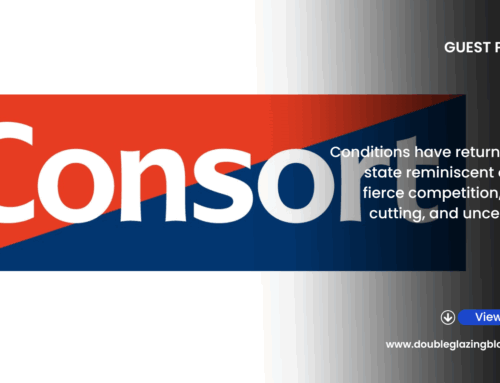I touched on vertical integration earlier on in the year and posed the scenario that we may see more of it in the future in the window and door industry.
Here is the official definition of vertical integration according to Google: the combination in one firm of two or more stages of production normally operated by separate firms.
There’s a pretty big example of vertical integration going on in the US right now. AT & T, the world’s largest telecommunications company, intends to buy Time Warner in a deal estimated to be worth $85.4bn. In this scenario, AT & T, the company that provides the platform in which to broadcast content, wants to buy the company, Tim Warner, that actually creates and produces the content. Thus combining that particular supply chain together. At the moment the deal is being held up by trials in the US, although it is still expected to become a successful deal.
I think vertical integration in the window industry is something that we could see more of in the coming years.
Safety net
In the past couple of years we have seen quite a number of big mergers and acquisitions take place. You can catch up with those by visiting DGB Features. The key factor with those is that they were buyouts of either competitors or just companies without any direct connections between in each other.
Vertical integration is different. Often companies with an already established relationship end up coming together in partnership. Take the AT&T/Time Warner deal. Time Warner content is already shown on media platforms held by AT&T. The two are simply wanting to combine to solidify their supply chain and relationship.
This is something I can see happening in the window industry. I feel like there are probably only a handful of big competitors mergers left possible in the industry. After that, companies at the top of the supply chains may start looking further down those supply chains to consolidate their business that way instead.
We could see the likes of Pilks or Saint-Gobain start buying up IGU manufacturers. We could see syscos going in to buy fabricators of their products. We could see more fabricators buying up installers that already sell their products.
This is something that has already happened with HWL Windows. They are fabricators based in Leeds. They also happen to own a number of installers as part of the larger group of companies. They then fabricate the products their own installers sell. It’s a self-sustaining business model that ensures installers keep selling their products, whilst at the same time being able to continue to sell them to other installers outside the group.
Right market conditions
I think as we head into next year, and even now, the conditions are good enough for companies higher up the window supply chain to at least consider buying up their own customers. As above, it’s an easy way to solidify their own supply chains. It also creates an environment where both parties are able to lean on each other more for support. Growth could be boosted that way.
The road isn’t completely smooth sailing though. One of the reasons why the AT&T/Time Warner merger is being held up is that there are concerns about lack of competition. Both these companies are absolutely massive, and their merger will definitely corner off a very large part of their marketplace. Not exactly great for stimulating competition.
That is where our own industry needs to apply some thought. Some of the bigger vertical integrations would remove a lot of competitive edge from the market, and as we know, there is a competition commission in the UK set up to overlook such things to make sure consumers are not left with a narrow choice of options.
I actually think vertical integration could help solve certain industry problems that installers have been suffering from this year. By combining fabricators with installers, it could be the case that the combined group could deal better with quality control and product training. There would be a new inherent impetus to make sure problems in such areas do not occur. Smooth those things out and you could see productivity and sales soar.
All of this is hypothetical of course. But more people I find are talking about it, and more often than not, if people are talking about it there’s a reason for it. 2018 could be an interesting year indeed.
To get weekly updates from DGB sent to your inbox, enter your email address in the space below to subscribe:







